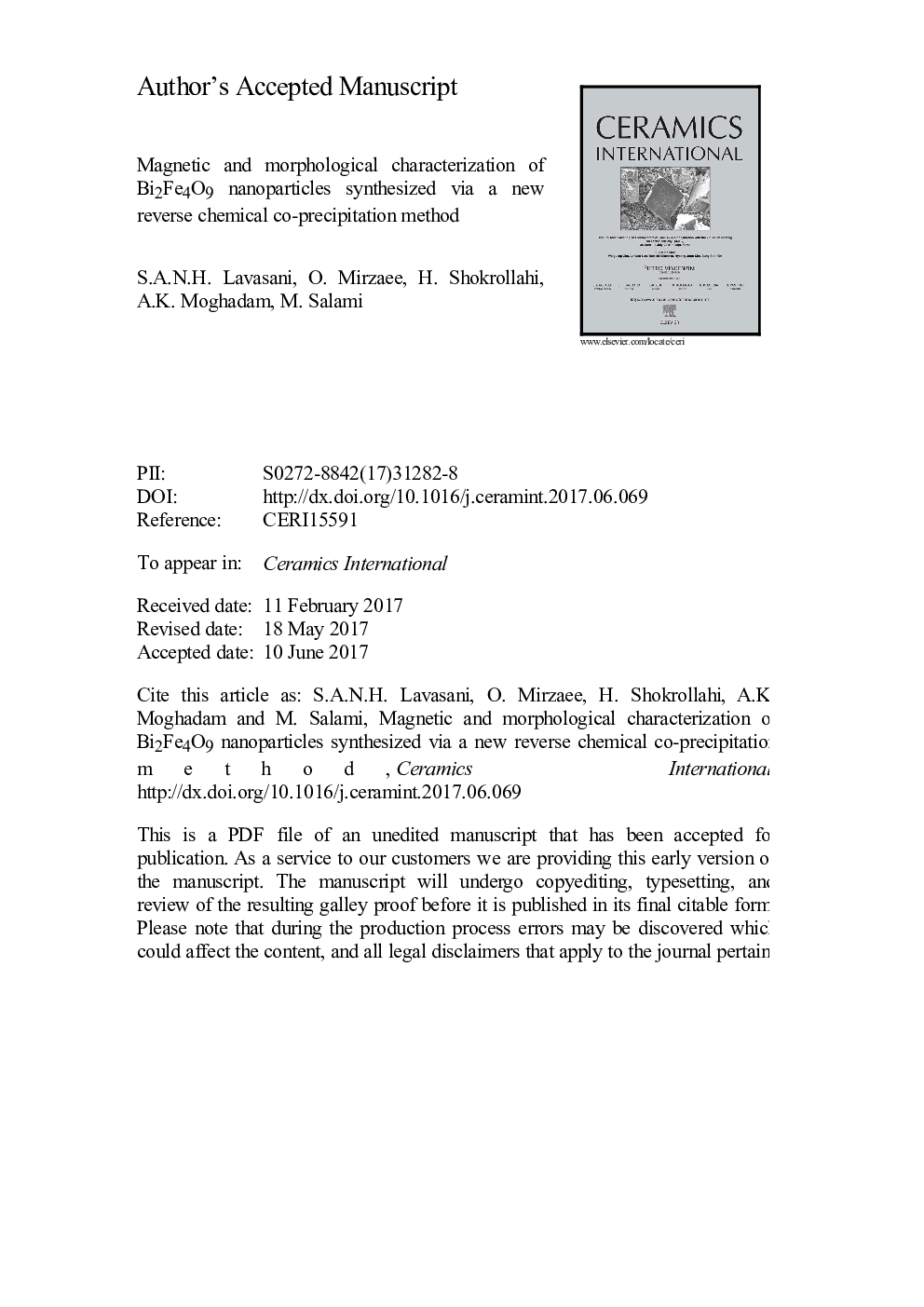| Article ID | Journal | Published Year | Pages | File Type |
|---|---|---|---|---|
| 5437506 | Ceramics International | 2017 | 17 Pages |
Abstract
Nano-sized Bi2Fe4O9 (BFO) was successfully synthesized using a new reverse chemical co-precipitation method at different pH values of 8-12. These powders were examined by x-ray diffractometery (XRD), thermogravimetrical differential thermal analysis (TG-DTA), field emission scanning electron microscopy (FESEM) and vibrating sample magnetometery (VSM). The XRD analysis showed the formation of pure phase Bi2Fe4O9 at calcination temperature over 700Â â. The TG-DTA curves indicated the crystallization temperature of 617Â â for the Bi2Fe4O9 sample. The FESEM micrographs revealed a precipitates agglomeration, which is related to the nature of the chemical co-precipitation method and free surface energy of nanoparticles. Furthermore, the particle size of the powder samples increased from 43 to 131Â nm as the pH value increased from 8 to 12, respectively. Also, the morphological change from nearly cubic to rod-like shape in the nanoparticles was observed by increasing the pH value. The M-H curves of the as-prepared powders confirmed the antiferromagnetic behavior in all samples. Uncompensated spins from the surface led to the appearance of saturation magnetization in the Bi2Fe4O9 nanoparticles. Besides, a decrease in the particles size resulted in more uncompensated spins, thereby improving the saturation and remnant magnetization from Ms = 0.35Â emu/g and Mr = 0.010Â emu/g for pH = 12 to Ms = 1.15Â emu/g and Mr = 0.042Â emu/g for pH = 8. Furthermore, as the pH values increase the coercive fields firstly rise up to 196Â Oe for pH = 9 and then decrease to 151 for pH = 12.
Related Topics
Physical Sciences and Engineering
Materials Science
Ceramics and Composites
Authors
S.A.N.H. Lavasani, O. Mirzaee, H. Shokrollahi, A.K. Moghadam, M. Salami,
